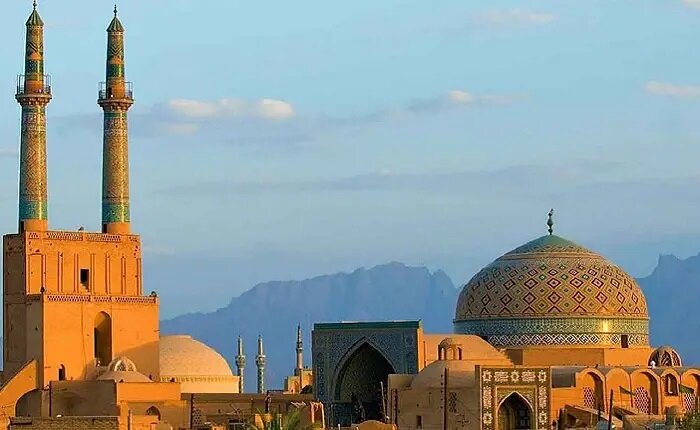Yazd seeks to replace tile manufacturing with eco-friendly tourism

TEHRAN — Iran’s Yazd province, which is both a major hub for tile production and house to numerous travel attractions, seeks to reduce its ceramic output in favor of expanding the tourism sector.
On Saturday, Mohammad-Ali Shah-Hosseini, Yazd’s deputy governor-general of for economic coordination and tourism, announced plans to shift from tile and ceramic manufacturing to developing a green tourism industry as part of the province’s "New Yazd" transformative strategy.
Speaking at a meeting with entrepreneurs and tourism insiders, Shah-Hosseini emphasized that Yazd, known for its robust industrial and mining sectors, has long been a hub for tile and ceramic production, attracting a significant non-native workforce.
The official revealed that out of the 250,000 workers employed in the sector, approximately 100,000 are non-locals, which has impacted the local culture, especially in a number of cities like Ardakan.
“Given the cultural and environmental challenges brought by this industrial migration, we must replace polluting industries with cleaner, sustainable alternatives.”
According to the New Yazd strategy, industries that are high in water consumption or environmental pollution, such as tile and ceramics, should be substituted with green tourism, which is more aligned with the natural ecosystem of Yazd, which is a city on the edge of the desert, he explained.
Yazd, already distinguished as the 2024 Tourism Capital of the Asian Dialogue Forum (ACD), is positioned to capitalize on its rich cultural and environmental potential. The province’s historical core was designated a UNESCO World Heritage site in 2017, further enhancing its appeal to global tourists.
Shah-Hosseini also highlighted the importance of the upcoming ACD tourism ministers’ summit, set to be held in Yazd next month, as a pivotal moment for the region’s tourism sector.
Elsewhere in his remarks, the official urged local universities and tourism students to contribute to the event, ensuring that academic expertise helps shape the province’s future in sustainable tourism.
A don’t miss destination
In July 2017, the historical core of Yazd, the provincial capital, was named a UNESCO World Heritage site. Yazd is regularly referred to as a delightful place to stay, or a “don’t miss” destination by almost all of its visitors. The city is full of mudbrick houses that are equipped with innovative badgirs (wind catchers), atmospheric alleyways, and many Islamic and Iranian monuments that shape its eye-catching city landscape.
Cultural heritage experts believe that Yazd is a living testimony to the intelligent use of limited available resources in the desert for survival. Water is brought to the city by the qanat system. Each district of the city is built on a qanat and has a communal center. Furthermore, the use of earth in buildings includes walls and roofs through the construction of vaults and domes. Houses are built with courtyards below ground level, serving underground areas. Wind-catchers, courtyards, and thick earthen walls create a pleasant microclimate.
The historical core of Yazd is chockfull of mudbrick houses, bazaars, public bathhouses, water cisterns, mosques, synagogues, Zoroastrian temples, and centuries-old gardens. From the divine point of view, the city enjoys the peaceful coexistence of three religions: Islam, Judaism, and Zoroastrianism.
Yazd is home to numerous qanats which have supplied water to agricultural and permanent settlements for thousands of years. The man-carved underground qanat system relies on snow-fed streams flowing down the foothills of surrounding mountains. The earliest water supply to Yazd is estimated to date from the Sassanid era (224 to 651 CE). However, many others have been continually repaired and used over time, and most surviving Ab-Anbars (traditional mudbrick cisterns) can today be traced to the late Safavid and Qajar periods.
AM
